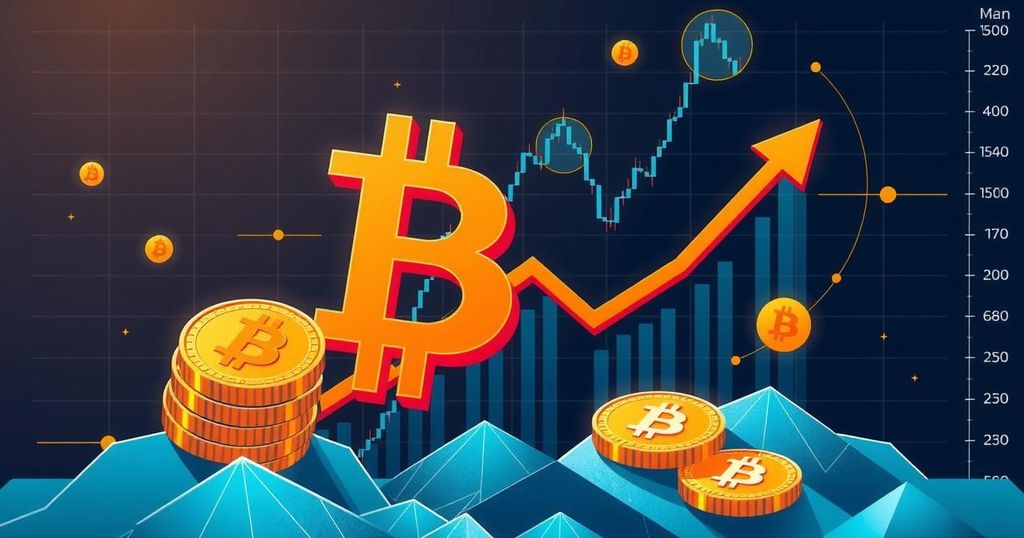Bitcoin and Ethereum Experience Price Fluctuations Following Slower U.S. Inflation Rates
Summary
Bitcoin’s price fell slightly to $56,500 after a U.S. inflation report revealed a 2.5% annual increase in consumer prices, lower than expected. The Federal Reserve is likely to begin rate cuts soon, but uncertainties around the upcoming presidential election and labor market data may influence Bitcoin’s future performance.
On Wednesday, Bitcoin experienced a slight decline following the release of the Consumer Price Index (CPI) for August, which revealed a year-over-year inflation rate of 2.5%. This figure was slightly lower than economists’ expectations of a 2.6% increase. The Bureau of Labor Statistics (BLS) reported that inflation rose by 0.2% on a monthly basis, consistent with the growth seen in July, after a decrease of 0.1% in June, marking the first negative CPI change since 2020. After the inflation report was published, Bitcoin’s price fell to $56,500, declining by 1.5% within the day. Other cryptocurrencies, including Ethereum and Solana, likewise experienced drops, reaching prices of $2,300 and $130, respectively. Tom Dunleavy, a partner at MV Global, commented, “All in all, it’s a very positive report now that leads to a 25-basis-point cut now being very likely for next week. I think the near term implications for Bitcoin are fairly muted.” Dunleavy further indicated that as the Federal Reserve anticipates a series of rate cuts, the outcome of the upcoming presidential election in November will likely hold greater significance for Bitcoin’s pricing than monetary policy changes. Bernstein analysts have predicted that depending on the election results, Bitcoin’s price could vary significantly by as much as $50,000. The latest inflation data is poised to be one of the critical factors considered by Federal Reserve officials in their next policy meeting. With indications that inflation is nearing the Fed’s target of 2%, there is a robust expectation for the initiation of rate cuts, with the CME Group’s FedWatch Tool showing an 85% likelihood of a 0.25% cut following the inflation news. Over the past year and a half, the Federal Reserve has implemented numerous rate hikes to combat inflation by increasing borrowing costs. As inflationary pressures diminish, the Fed has redirected its attention to ensuring the health of the labor market, which likewise affects Bitcoin’s valuation. For instance, Bitcoin’s price dipped to $53,300 last week due to disappointing job growth data, with the BLS reporting an addition of only 142,000 jobs in August against a forecast of 160,000. While lower interest rates are generally anticipated to be favorable for risk assets such as Bitcoin, analysts from Bitfinex noted the potential short-term challenges these could create due to a potential “sell the news event.” Traditionally, stock indices like the S&P 500 often experience declines following a rate cut. Federal Reserve Board Governor Christopher Waller acknowledged the complexities surrounding the appropriate timing for rate cuts, suggesting that further cuts may be necessary while emphasizing flexibility in adjustments based on evolving economic data. “I do not expect this first cut to be the last,” Waller stated, adding, “I am open-minded about the size and pace of cuts, which will be based on what the data tell us about the evolution of the economy.”
The article discusses the recent fluctuations in Bitcoin and other cryptocurrency prices in response to U.S. inflation data released in August. With the Consumer Price Index indicating a lower-than-expected inflation rate, market analysts are closely monitoring implications for monetary policy, particularly the Federal Reserve’s interest rate decisions. The dynamics of fiscal policy, election outcomes, and labor market health are central themes that influence Bitcoin’s market performance and investor sentiment.
In conclusion, Bitcoin and other cryptocurrencies have shown sensitivity to economic data, particularly inflation rates, which directly influence Federal Reserve monetary policy. The recent U.S. inflation report suggests a likelihood of interest rate cuts, an event that could initially create volatility in the cryptocurrency market. Additionally, external factors such as the presidential election are expected to play a significant role in Bitcoin’s pricing. As the Federal Reserve prepares to navigate economic challenges, their decisions will continue to impact investor confidence and market trends for risk assets.
Original Source: decrypt.co




Post Comment